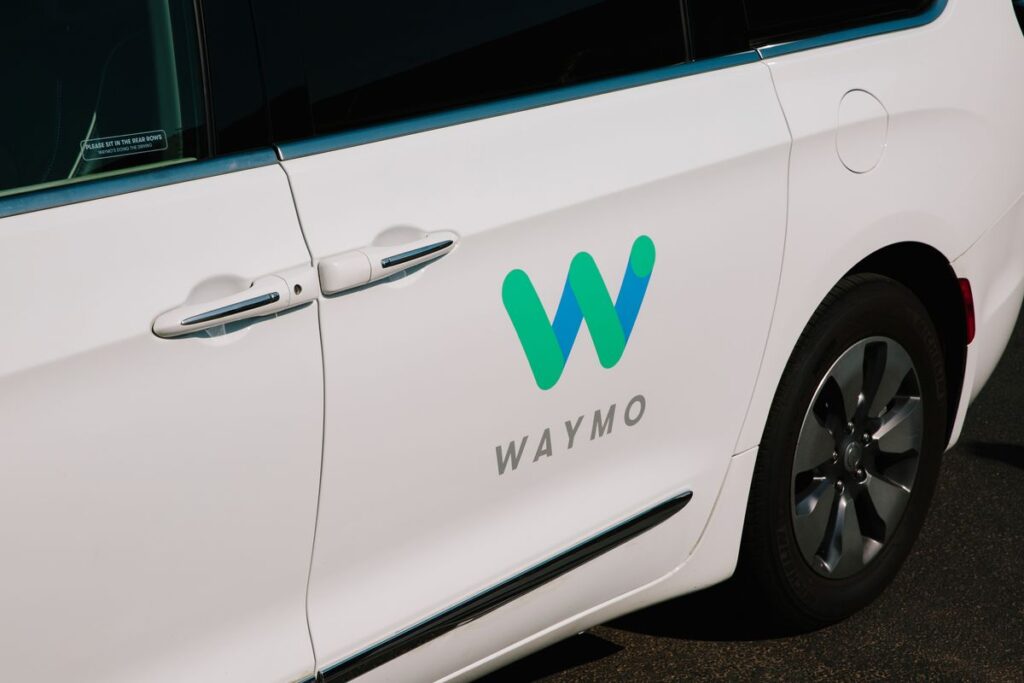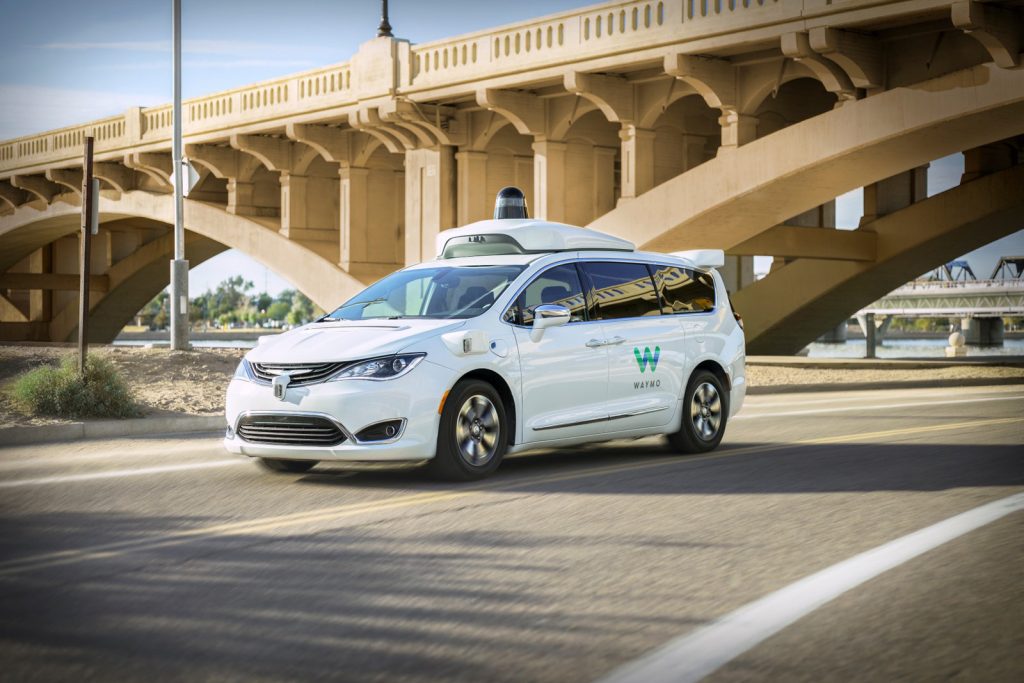Waymo Gets Green Light to Expand Robotaxi Service in Los Angeles and San Francisco Peninsula

I am a law graduate from NLU Lucknow. I have a flair for creative writing and hence in my free time work as a freelance content writer.

I am a law graduate from NLU Lucknow. I have a flair for creative writing and hence in my free time work as a freelance content writer.
Tesla is very much ahead of its time in terms of autonomous driving technology. But names like Alphabet are also trying to expand in the very field and provide its customer with the best of them all. Alphabet Inc., the parent company of Google, has another subsidiary named Waymo, which dedicatedly works to developing autonomous driving technology. In fact, the said company also runs a commercial self-driving taxi service in the Arizona region, named Waymo One, the only self-driving taxi service. The taxis under this project runs without having a standby driver for emergencies. Apart from Waymo’s self-driving taxis, the software developed by the company is also used by some other car companies, like Stellantis, Jaguar, Daimler AG, Land Rover, Volvo, and Nissan-Renault.
About Waymo
Waymo LLC is a subsidiary of Alphabet Inc. and has its headquarters based in Mountain View, California, U.S. It is a 13-years-old company founded in January 2009 by Sebastian Thrun and Anthony Levandowski. Till 2016, Google was the parent company of Waymo when it started a self-driving car project in 2009, but in 2016 Alphabet became the parent company of the same, when the same project had a name change to Waymo. Dmitri Dolgov and Dmitri Dolgov (Co-CEO) Tekedra Mawakana are leading Waymo as the co-CEOs.
The basic concept behind the idea of Waymo is to avoid the accidental deaths that happen due to various negligence reasons of humans. The company makes use of artificial intelligence, sensors, and hardware-enhanced vision system to provide safer transit for both humans and goods.

Founding Waymo
Waymo wasn’t founded as a company but was launched as a project by Google in its Google X lab. The project was headed and launched by Sebastian Thrun, who had gained much experience in artificial intelligence after being a part of organisations like SAIL (Stanford Artificial Intelligence Laboratory) and Anthony Levandowski. During 2006-07, Google was already working on improving its maps and street view, and for that, the Street View team of Google has launched Ground Truth, a project that became the basis of Google’s self-driving program.
Anthony Levandowski, the other co-founder of Wymo, was also in self-driving vehicles and had built an autonomous two-wheeled motorcycle named Ghost Rider for the 2004 DARPA Grand Challenge. Being a Google employee, Levandowski sold his technology to Google, which was an addition to Google’s self-driving program. In 2012, Google obtained a driverless technology license from the Nevada Department of Motor Vehicles (DMV), and it carried out its first experiment with the self-driven car. The license was the first of its kind in America.
Under project Chauffeur, Google launched a new driverless car prototype (100% autonomous) without any steering wheel, gas pedal, and brake pedal in May 2014. Another prototype came in December with the name Firefly, mainly built for learning and experimentation. In 2015, the company introduced the world’s first fully driverless ride on public roads, and the experiment included no test driver.
This project Chaufwur was renamed Wayno in 2016 and was established as a start-up company as well as a subsidiary of Alphabet. By October 2017, the company was testing driverless minivans on roads, and in 2019, it started to build its cars in a Detroit manufacturing plant. Waymo also started integrating its technology into the existing car models rather than building new designs for them. In 2020, the company raised a sum of $3 billion from its various investors. The same year, Waymo also partnered with Volvo for the integration of its technology into Volvo’s vehicles.
The CEO at Waymo
Dmitri is a Russian-American businessman, whereas Tekedra has been a lawyer and a well-known businesswoman in America.
Dmitri is an alumnus of the Moscow Institute of Physics and Technology, where he earned a Bachelor of Science and a Master of Science degree in physics and math. He also got a PhD degree in computer science from the University of Michigan and a postdoctoral from Stanford University. He has vast experience in the field of self-driving technology and has worked at Toyota and Google.
Tekedra, on the other hand, was already working at Waymo as the COO before she held the post of CEO. She has also worked with companies like Steptoe & Johnson, AOL, Yahoo!, eBay, etc. Tekedra holds a Doctorate in law.

Yashica is a Software Engineer turned Content Writer, who loves to write on social causes and expertise in writing technical stuff. She loves to watch movies and explore new places. She believes that you need to live once before you die. So experimenting with her life and career choices, she is trying to live her life to the fullest.
The French automobile company, Renault has partnered with Waymo, the automobile subsidiary of tech giant Alphabet Inc., to bring new autonomous cars to France and Japan. The venture also includes Renault’s Japanese partner Nissan, which will be responsible for the launch of those self-driving cars in Japan.

With this partnership, Renault and Nissan will be researching on how self-driving cars can help in easing-out the transportation of humans as well as goods and develop driverless mobility services for the same. Noticeably, Waymo has already brought such vehicles in Arizona called Waymo One and a limited robo-taxi pilot program in suburban Phoenix last year. Though the launched cars are fully-autonomous, there is always a human monitor sitting on the other front seat of the car for emergencies.
The companies will also work on the commercial, legal and regularity issues, that are related to the development of self-driving cars and making the transportation-as-a-service for both the countries.
According to the reports, the agreement between the companies has been done for a limited but unspecified time. There has been no comment on the same from either of the company. The agreement also has restricted all the three to work with other companies on a similar project.
“This is an ideal opportunity for Waymo to bring our autonomous technology to a global stage, with an innovative partner. With the Alliance’s international reach and scale, our Waymo Driver can deliver transformational mobility solutions to safely serve riders and commercial deliveries in France, Japan, and other countries,” said John Krafcik, CEO Waymo, in a statement.
Though Waymo is quite excited about this merger, the venture will be a 50-50 partnership between Renault and Nissan for both the countries, and there has been no hint on the role of Waymo for the same. The two companies will be setting up a joint committee to work together in France and Japan.
Earlier, the two companies were in talks with Fiat Chrysler Automobiles (FCA) to bring next-generation technology and work in the field of self-driving cars. But the merger could not take place, and FCA withdrew the agreement.

Yashica is a Software Engineer turned Content Writer, who loves to write on social causes and expertise in writing technical stuff. She loves to watch movies and explore new places. She believes that you need to live once before you die. So experimenting with her life and career choices, she is trying to live her life to the fullest.